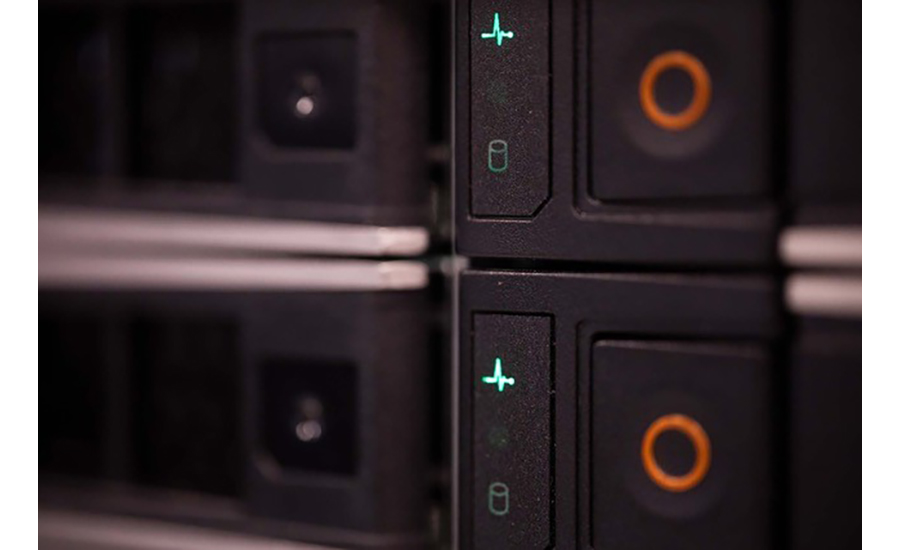The amount of digital data created over the next five years will be more than twice the amount of data created since the advent of digital storage, according to a 2021 report from International Data Corporation (IDC). With the pandemic-induced increase in people working from home, attending classes via video conference, and streaming video for entertainment, data creation and replication had a record year in 2020.
Video surveillance applications also saw a greater need for data protection, access, and storage. “The year 2022 is likely to be a massive year for the video storage industry,” predicts Eugene Kozlovitser, chief technology officer of BCD in Buffalo Grove, Ill. “New low-latency solutions are in greater demand and 4K/8K edge IoT devices continue to rise and dominate. With grouping, analysis, and processing of streams being performed simultaneously on-premise and in local cloud systems, storage infrastructure needs to be strong enough to both accommodate and scale to account for growing bandwidth and data traffic.”
Cloud and hybrid storage were already trending in video surveillance alongside the increase in IP applications, of course — analog devices recording to DVRs? Your days are numbered. Today, it’s not unusual to find enterprise IP video systems utilizing or integrating with IT infrastructure. As security dealers and integrators work closely with their customers’ IT departments, being able to understand IT priorities, as well as technical advancements and innovations in storage, will help them close deals.
The IT Value Prop
First, security dealers and integrators should consider how value propositions offered by security equipment can appeal to the needs of IT personnel. Paul Garms, director of regional marketing - video systems, Bosch Security and Safety Systems, Fairport, N.Y., notes, “By understanding the customer’s IT requirements, integrators can recommend the architecture that would be the best fit for the organization.”
In addition to storage, future-proofing is of particular interest to IT. Jason Bonoan, global product marketing manager of Seagate, Fremont, Calif., cites another IDC report, the “Global DataSphere Forecast 2021-2025,” which predicts that the datasphere will grow to approximately 180 Zettabytes (ZB) by 2025. That’s 180 billion terabytes. “We’re closely working with our VMS partners to develop technology that will meet this significant growth in data,” he says.
Data security is an obvious priority in the IT world, so knowing a manufacturer’s security methodology can aid an integrator who needs to make a sales pitch to the IT team. For example, BCD uses an ISO-certified approach to supply chain. Kozlovitser explains, “We want our customers to have peace of mind from production line to delivery. We realize this by utilizing only NDAA-compliant hardware and building on a physically isolated network solely designed for secure system provisioning, thus offering end-to-end product protection.”

The BCD 2U server is paired with 16TB Seagate hard drives to satisfy storage requirements. // IMAGE COURTESY OF BCD
Technological Innovations
Further enterprise-level innovations are coming to market in response to the increased need for data and video management and storage. “Applications most likely to include enterprise solutions are hyperscale/cloud data centers and centralized surveillance applications,” Bonoan says.
Last year, Seagate launched a mass-capacity, intelligent storage system designed to streamline data management and reduce human intervention for data center environments. “This high-density storage system offers SAN-level performance and delivers maximum data density in a small footprint — which is the goal as the datasphere continues to grow,” Bonoan says.
San Antonio-based Pro-Vigil has also worked to innovate the approach to large-scale DevOps automation, which includes being able to store and use device data centrally for preventive maintenance, according to Satish Raj, chief technology officer. “Given the scale at which we operate, it is not possible to ensure near 100 percent up time through human effort, so we have a combination of a central cloud-based health management systems and edge software agents. These coordinate automated monitoring of the devices, diagnosis, and self-healing.”
Infrastructure Advances
Advances in infrastructure are applying IT-friendly concepts to the security video use case. Hyperconverged Infrastructure (HCI) allows for resources to be shared across the infrastructure, reducing total cost of ownership while also removing the inefficiencies inherent to traditional data centers. In electronic security, this virtualization means that multiple users can immediately access video data at any given time.
Hybrid Hyperconverged Infrastructure (HHCI) takes this a step further, separating computing and storage to simplify independent scalability. “HHCI consolidates multiple workloads and provides a powerful option for companies who want to independently increase or scale one virtual hardware system — like storage — without increasing or scaling another,” Kozlovitser explains. HHCI reduces the hardware footprint and power requirements as well as disaster recovery time.
“Each of BCD’s HCI and HHCI video storage solutions can be scaled differently to fit each customer’s specific needs, making each platform exclusive in industries such as hospitality, healthcare, transit, and government,” he adds.
In our hyper-connected world, video surveillance infrastructure and IT infrastructure may one day be one and the same. This means that security manufacturers will have to continually innovate data storage solutions and security integrators will need to stay up to date on this quickly-changing realm of technology. Sharing resources with IT, adopting data security best practices, and understanding enterprise-level data management strategies will allow integrators to expand their service offerings as we get closer to the 180 ZB mark.



